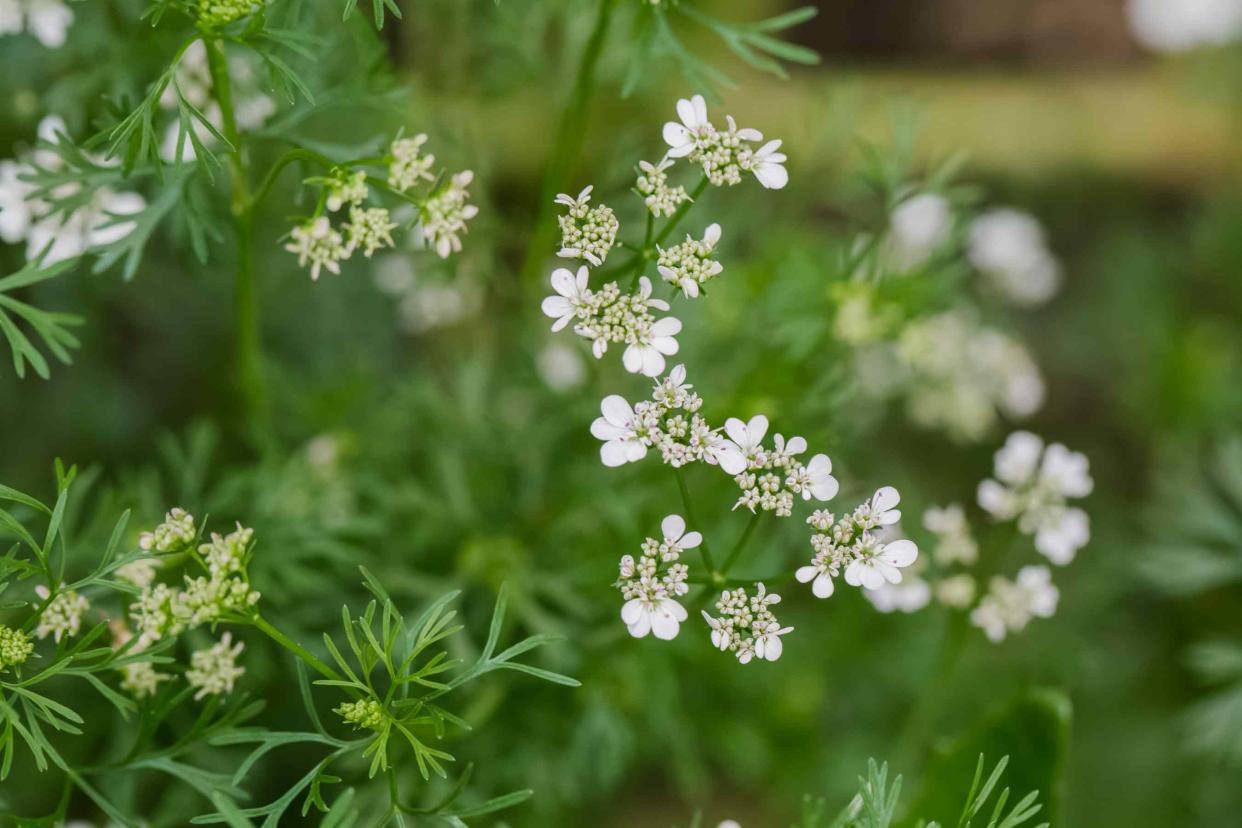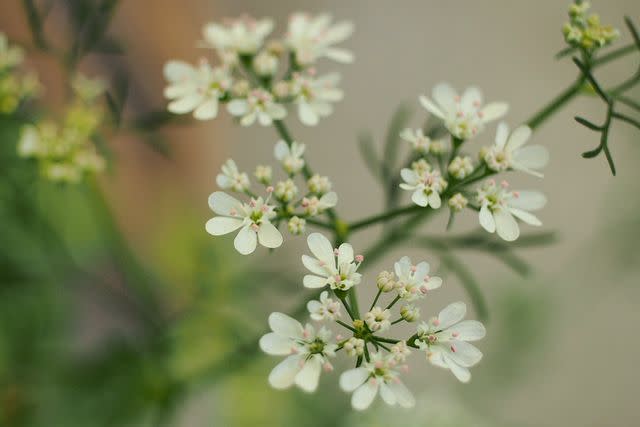Why Your Cilantro Is Bolting Too Quickly and 6 Tips to Prevent It

The Spruce / Kara Riley
Love or hate the taste, cilantro is a popular addition to many cuisines. If you're growing cilantro you have probably had the problem of it bolting easily, which simply means that the plant sends up a flower stalk and goes to seed.
Since cilantro is a cool-season herb, warming temperatures will signal to the plant that it's time to flower and go to seed rather than continue producing leaves. It's very sensitive to warmer temperatures, so if you're seeing signs of flowering, that's likely why.
Bolting is the plant is doing what comes naturally, but you can slowly down the bolting with these some growing tips. Learn more ahead about cilantro bolting.
Why Does Cilantro Bolt?
Cilantro (Coriandrum sativum) is a short-lived annual, cool-season herb. Once temperatures begin to rise and reach the 70s, the plant responds by bolting (flowering and going to seed) as a way to continue its life cycle. Producing seeds means that the species has a chance for another crop.
Fun Fact
Cilantro bolting isn't all bad—the seeds can be dried and used as coriander (the name for cilantro's dried seeds).
Want more gardening tips? Sign up for our free gardening newsletter for our best-growing tips, troubleshooting hacks, and more!
6 Ways to Keep Cilantro from Bolting

While it can be difficult to stop cilantro from bolting, there are some ways to extend the life of the plant before it goes to seed and dies.
Keep it Cool
Whether you are growing cilantro in the garden or indoors in containers, temperature is a huge factor in how long the plant will last before it bolts. You can extend the harvest season by planting it in the early spring and fall when day and nighttime temperatures or lower. If growing cilantro indoors keep the plants around 70 degrees or lower.
Control the Sunlight
Cilantro needs only about six hours of bright sunlight. Select an indoor or outdoor spot that doesn't receive high-noon heat. Lighting for indoor pots of cilantro is easily controlled with grow lights.
If planting outdoors in a hot climate, consider placing the plants where they can receive some afternoon shade. Too much heat from direct sun can cause the plant to bolt early.
Water Regularly
Plants that receive too much or too little water are placed under stress. To survive the stress, the plant bolts to produce some seed to extend the species. Whether growing in containers or the ground, keep the soil evenly moist but be sure the roots are never waterlogged.
Pinch or Prune Often
For new plants, once they reach about six inches tall pinch back the tips. Harvest or prune the leaves often (once a week) to remove damaged growth, yellowing leaves, or flowers that form.
Practice Succession Planting
This tip doesn't stop cilantro plants from bolting but it does help you keep tender, tasty cilantro on hand. Wait two to three weeks between each time you start seeds or plant new cilantro seedlings. This is called succession planting or planting the same crop several times during the growing season.
Choose Slow-Bolting Cultivars
There are cilantro cultivars that are less prone to bolting. Look for seedlings or seed packets that are described as bolt-resistant, heat-tolerant, or long-standing. Three choices are ‘Calypso’, ‘Slo Bolt’, and 'Leisure'. These cultivars are usually less sensitive to heat and can produce good-tasting foliage a bit longer into the growing season.
Why Bolted Plants Can Actually Be Beneficial
While it is disappointing to see a plant bolt and die, there are benefits to the natural process of bolting. The flowers that form will help attract much-needed pollinators to your garden. Many plants produce edible seeds after bolting that add flavor to prepared foods.
The most beneficial effect of bolting is the production of seeds that can be saved to grow new plants. Backyard gardeners and commercial farmers have long known the value of allowing some plants to "go to seed" to maintain the longevity of a plant species.
Frequently Asked Questions
What can you do with cilantro that has bolted?
Once cilantro bolts, enjoy the lacy white flowers with the bees and butterflies. If you want to collect the seeds for eating or planting, watch the small, round seed heads closely and collect them before they burst. You can dry the seeds on newspaper indoors or use a dehydrator. Be sure they are completely dry before storing.
Is cilantro still good after bolting?
Though they are still safe to eat, once cilantro bolts the leaves become tough and bitter.
How do you prune bolted cilantro?
Removing small flowers that form with a pair of clean, sharp garden shears can extended the life of the plant by a week or so. Once cilantro has fully bolted, there is no need to prune. The plant can be allowed to go fully to seed or removed and added to the compost pile.
Read the original article on The Spruce.

